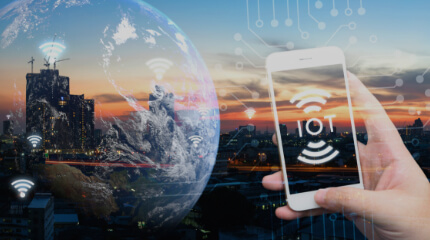Organizations (large or small) are storing structured and unstructured data from millions of users. This practice will enable organizations to provide better and more personalized service from knowing our tastes and purchase preferences to the places we are interested in going on vacation or suggesting a restaurant for us at night. These data starts from different origins and different ways in which they are captured.
On the one hand, there is transactional software such as
enterprise resource programs (ERP) that record payments, invoices, budgets, and the accounting of an organization. On the other hand, there are systems that support customer service, sales, and marketing teams, such as CRM (Customer Relationship Management). This is where queries, meetings, emails sent, responses to campaigns carried out, sales achieved are noted. To this, we must add the information of all formal transactions collected by the government, local public administration, insurance, credit cards, and banks.
And considering that digital services provided by
app development companies are also stored, it is easy to imagine what Big Data refers to. Big Data is all our information and of companies or organizations.
What Else Are These Organizations Storing?
The internet searches we do, the pages we visit, the music we listen to, the movies we watch, the purchases we make from supermarkets, Mother's Day or Valentine's Day and Christmas gifts, our activity in social networks, the brands we like, what we write in a text message, the photos of family or friends we receive, including what we express in a phone call or Skype and many more.
All this activity is monitored, recorded, structured, analyzed, and commercialized. Big data is used in our favor or against, depending on the side we are. Every time we use Google, Facebook,
Instagram, Twitter, Linkedin,
Netflix, WhatsApp, Skype, Evernote, Snapchat, Slack, TripAdvisor, Amazon, Spotify, the maps on our cell phone and many other services, we are feeding information to this "giant" that lives in the cloud.
But it is worth remembering that the cloud is not in the sky. The cloud conceptually represents thousands of interconnected equipment. The "giant," on the other hand, represents who can pay for that information, legally through advertising contracts. Or on the contrary, who can get it fraudulently by hacking these servers (computers). Servers will keep this information forever, no matter how much we try to eliminate it. And in principle, stored safely, respecting the privacy of users.
Big data still present somewhat unexpected situations
The taxi we request using a secure application on the cell phone, our food delivery orders, the holidays we recently took, all these events and activities we do intersect and trigger more remote control marketing campaigns.
But these systems also collect information at somewhat more unexpected moments such as hidden cameras in the dark streets that record our steps, cameras inside shops or public transport stations, the electric car we drive that records every place we visit, the digital bracelet that counts our steps or pulsations, the medical services we use and the results of the laboratory tests, etc.
Version 2.0 of the unexpected Big Data
The unexpected can go further and be overly invasive. The software installed on the computer by a distrustful boss. A boss who feels the need to observe the pages an employee visits. The drone that flew over your garden while sunbathing quietly. The "talking" doll that many girls play with, who speaks and studies its playmate. The bracelet worn by some state employees in the United Kingdom, which monitors their movements. Even the times they visit the toilet.
In addition to the above, we must consider the most recent smart speakers that will take over our house or office. Those little virtual assistants or robots that we started installing in our homes to interact with our children or with us. The above and much more has allowed the expansion of the moments of interaction with servers in the cloud. We collaborate in creating the big data that records each event, activity, or step we take.
Big brother and Big Data: together to serve better
By incorporating marketing automation tools, these analytical technologies allow knowing the preferences of every user before interacting with them in online marketing campaigns and social networks.
Business intelligence and data mining solutions allow massive and analytical data processing. These tools make it possible to segment the audience more precisely and better analyze their behavior, considering different demographic patterns.
By better understanding the interests of different groups and tribes, an organization increases its ability to create new products and services, to have an integral view of the other. This increases its ability to detect opportunities and provide personalized attention. At the same time, they allow the elaboration of value proposals focused and launched at the right time, identifying recurring behaviors and trends.
Those institutions that are able to analyze and generate value through this data will gain an important competitive advantage, improving self-knowledge, that of their products, services, and, above all, of their users. Therefore, providing a better service and experience.


























